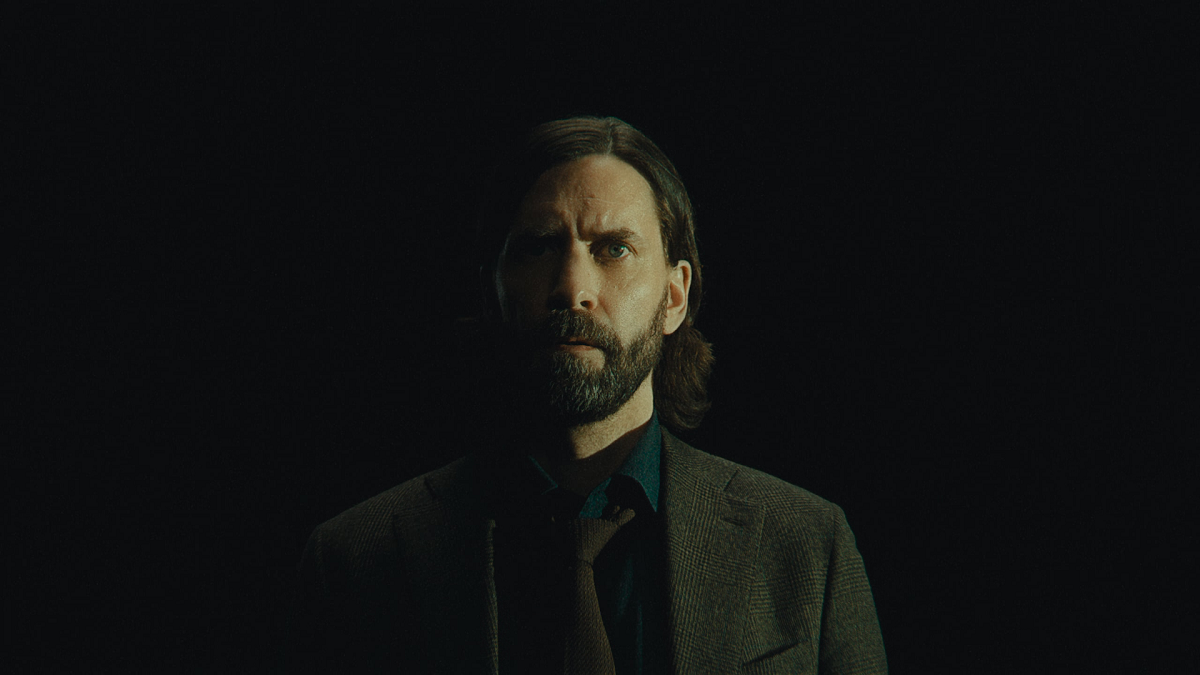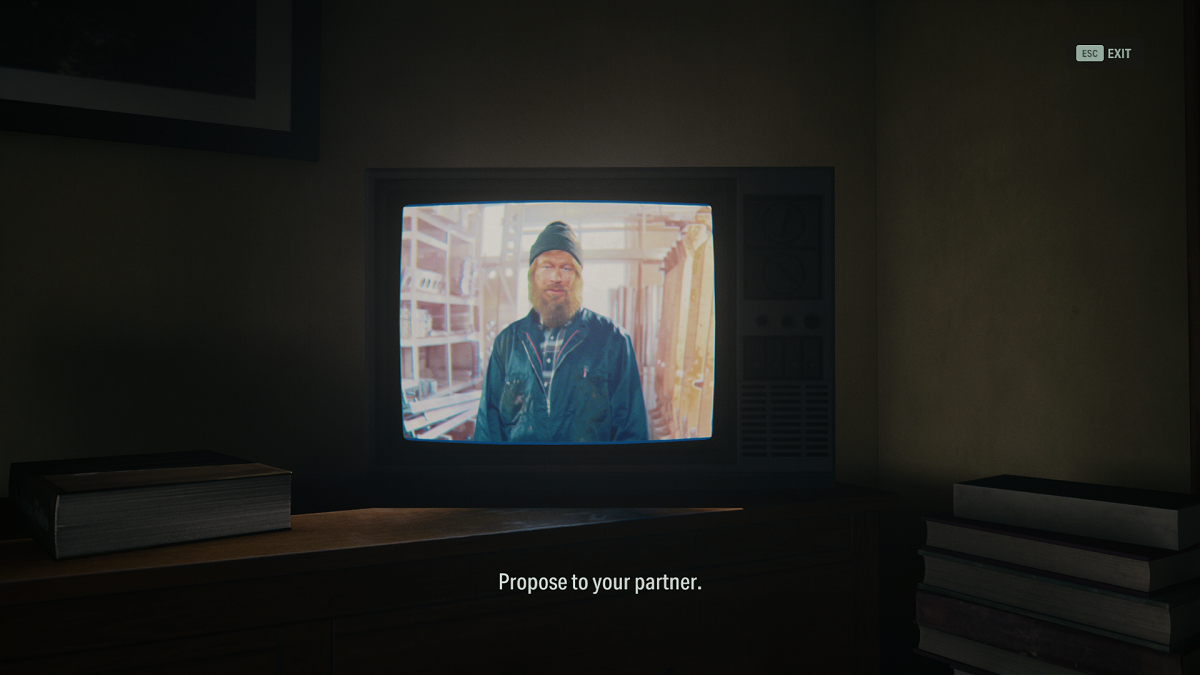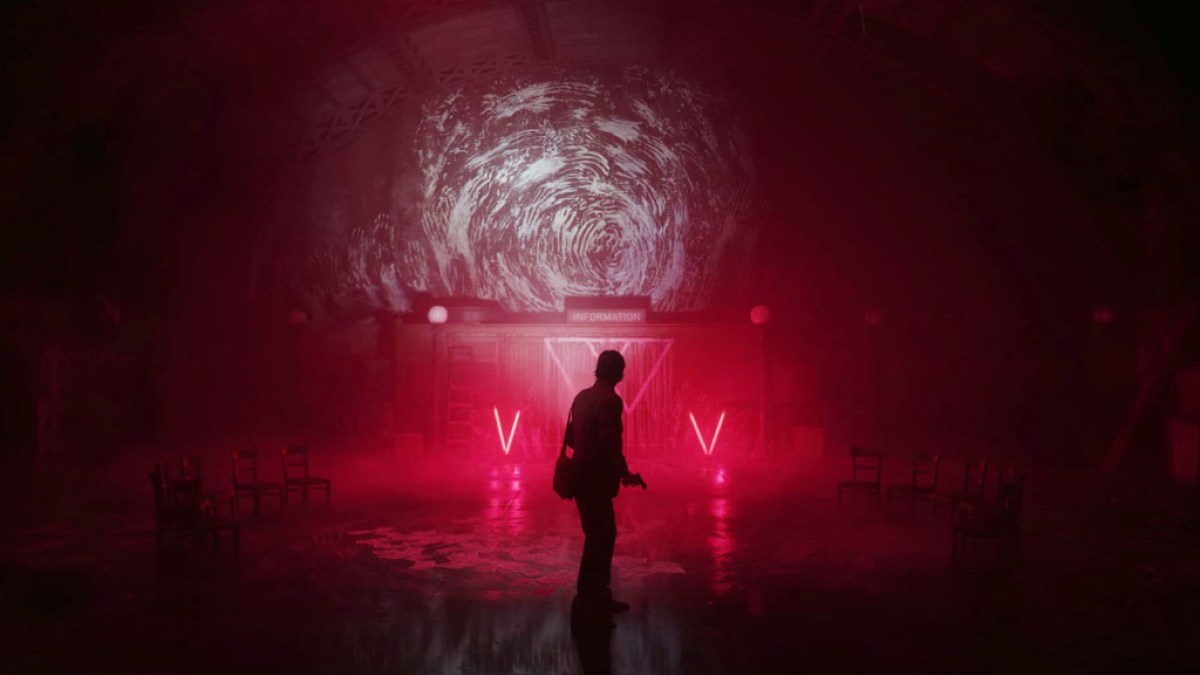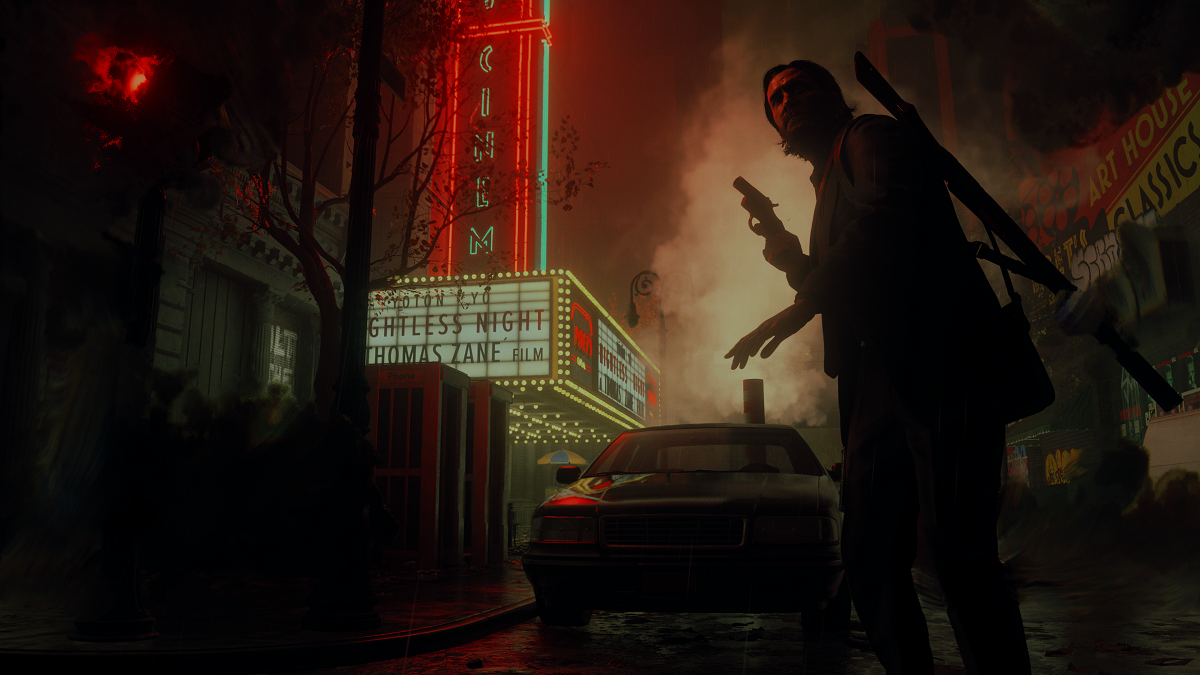Warning: The following article on how Remedy should keep using the Control style for future games contains spoilers for Alan Wake 2.
Ominous large fonts; illusive true-to-life characters bleeding into the frame; sound effects seemingly echoing off the walls of a chasmic void. Control imprinted a vision into me that I haven’t been able to shake, and the way Remedy Entertainment harnesses that style in Alan Wake 2 proves the team should continue using the aesthetic for future titles.
Alan Wake 2 rachets up the multimedia madness Control dove into, offering an experience creatively disfigured with bursts of live-action ingenuity. The vision is meaty. The settings, from realism to the artistic cracks at their visage, are familiar yet unnerving.
Unorthodox and inventive have always been elements Remedy thrived within, but ever since the developer refined their visual pizzazz with Control, the presentation has changed for the better.
My first notice of this came from playing as Saga in Alan Wake 2, where the FBI profiler ventured into the maw of Cauldron Lake’s twilight forest. At its throat, I waded through a pond – surroundings shifting between the murky streets of New York City in The Dark Place and dreary Cauldron Lake.
Related: Do You Need to Play Alan Wake 1 & Control Before Alan Wake 2?

I was reminded of Control‘s play on environments as red vapors from the Hiss contorted the FBC offices, and heroine Jesse’s powers returned creepily mutated rooms to normal. Yet in Alan Wake 2, Remedy utilized the two protagonists’ respective game worlds to hint at their connection, the scene flickering and fading like a hazy daydream. If Alan Wake 2 had been developed a few years after the first game, such a segment would never exist.
FromSoftware couldn’t reach the highs in Elden Ring without the Dark Souls trilogy. Game developers who learn from past projects and contribute those visions to execute a future title better are teachers still willing to be students of the craft, and I count Remedy as one of them. The Control style in Alan Wake 2 pioneers to new lands that probably no one thought could be nailed, and the title accomplishes this with strong live-action, comedy, and mind-bending visuals.

For instance, the commercials with the Koskela brothers in Alan Wake 2 harken to Remedy’s foray into televised shows with Night Springs from the first game, further elaborated in Control with FBC scientists discussing the ins and outs of their organization and supernatural items. In the vein of its last attempt, Remedy slathers quippy dialogue and subtle cues into the brothers’ wacky ads, building on what previously worked to foreshadow future gameplay environments and items.
The fun doesn’t end there, though. In Alan’s narrative, the (extremely) self-aware writer finds himself stepping in and out of a live-action musical re-telling his past. Nothing could have prepared me for Sam Lake shimming on a screen to an electric guitar riff, and the way the music pumps on as I gunned down enemies on a stage set felt like the perfect marriage of live-action and gameplay.
The team padded out the live-action scenes in Control, saving it for the old Director’s telepathic talks to Jesse and FBC videos; however, in Alan Wake 2, Remedy is swinging hard. Instead of drip-feeding realism here and there, the style becomes symbolic to the narrative, working side-by-side to take the player down paths never ventured before to spark a reaction.
Related: Should You Play as Saga or Alan in Alan Wake 2?

It’s like whenever you see Ahti, the peculiar janitor from Control, you never quite know when he’ll pop up in Alan Wake 2, but every time, it’s a treat to see what Remedy does with him. Whether that be his swoon-worthy singing on stage or catchy humming, it’s always part of the experience.
Similarly, the Control style is about never giving the player all the clues about what they’re stepping into. From department to department, Jesse falls down sightless pits to rooms of floating polygons or touches an interactable to teleport to an entirely new place. Alan Wake 2 follows these footsteps with Alan’s Writing Room and Saga’s investigations leading into The Overlaps.
The style is mechanically buzzing through the survival horror. Walls fall away to unveil new sections to previously explored rooms, and The Overlaps act as twisted extensions of Bright Falls. While trippy, the layout of biomes and how they complement mechanics felt deliberate and impactful.

Control had to walk for Alan Wake 2 to hit the hills running. The developer admitted to the media that the survivor horror couldn’t be what was on release without past projects, which evolved the team’s vision and technical capabilities. A rhythm was there, but Control gave them the last push.
Its visual-altering aesthetic flowed perfectly into Alan Wake 2 and accommodated the team’s vision for live-action and game mechanics. Future titles may depart from these elements to some degree, but it’s clear that Remedy has hit the gold mine on what style works with their ideas and proves it can take a game to dizzying heights.






Published: Oct 30, 2023 02:14 pm